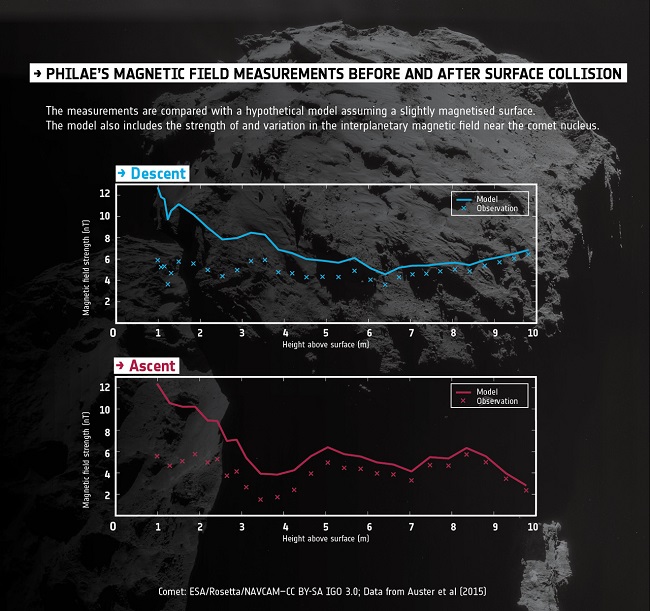Comet 67P pictured on 25 March. Image via ESA/Rosetta/NAVCAM - CC BY-SA IGO 3.0
In a bid to better understand the formation of our solar system, the European Space Agency’s (ESA) Rosetta probe and Philae lander have returned back their latest findings showing Comet 67P has no magnetic nucleus.
By attempting to analyse the comet’s potential magnetic properties, the ESA researchers hoped to discover whether there was evidence to show that an object’s magnetism within the proto-planetary disc could have led to the formation of our solar system’s planets.
This has been up for much debate as to the importance of magnetic fields in the early development of planetary bodies, which allowed the solar system to grow from a few centimetres to tens of metres across before gravity takes over and forms the giant planets and moons we know today.

Analysing Comet 67P, or any comet for that matter, proves vital to understanding this early-stage process, but findings from the landing of Philae on the comet showed no change in its magnetic field across a number of locations.
“If the surface was magnetised, we would have expected to see a clear increase in the magnetic field readings as we got closer and closer to the surface,” explains Hans-Ulrich. “But this was not the case at any of the locations we visited, so we conclude that Comet 67P/Churyumov-Gerasimenko is a remarkably non-magnetic object,” said Hans-Ulrich Auster, co-principal investigator of the Rosetta Lander Magnetometer and Plasma Monitor (ROMAP).
Likewise, no magnetic material was found on the comet’s surface during fly-bys by Rosetta, which noticed no variation in the fluctuating of its magnetic field.